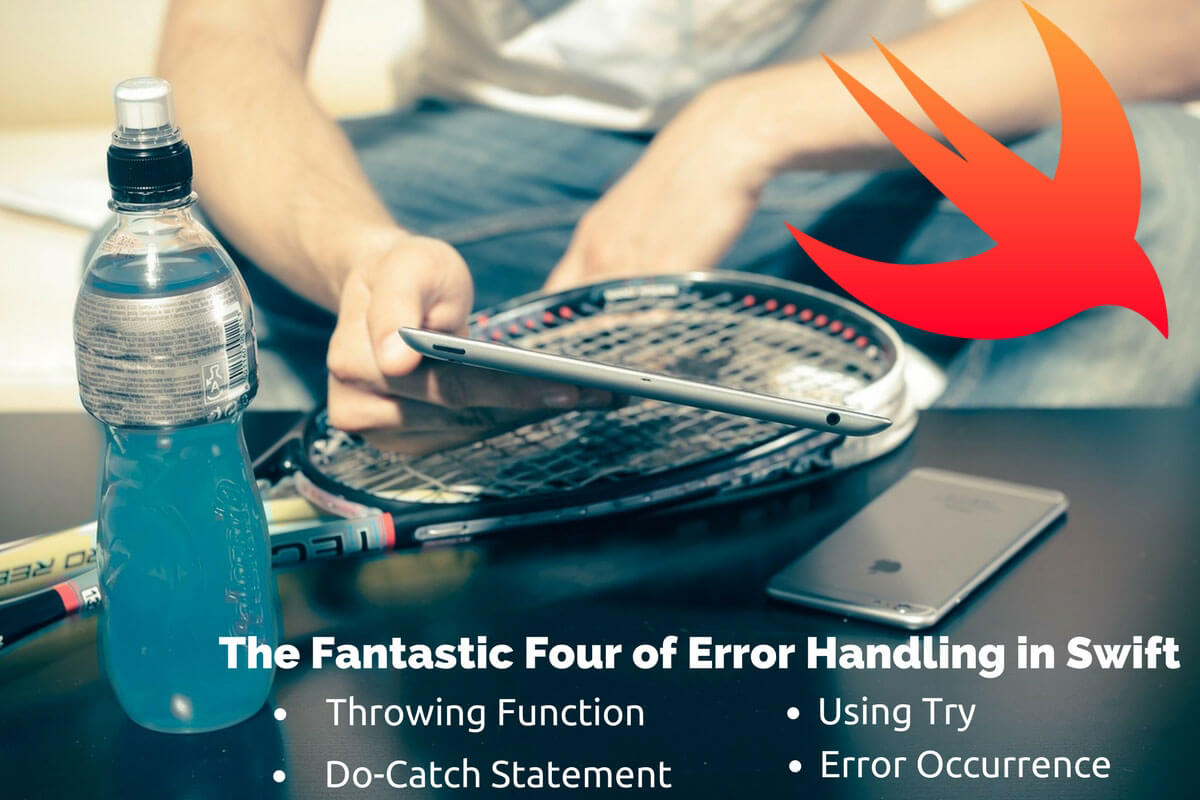The Fantastic Four of Error Handling in Swift
Swift 3 is one of the best programming language trusted by iOS app developers. And even the best needs a developer who is adept at handling errors. Now, just a little bit of background, errors here do not refer to system problems, but the errors that users will see if they do something which cannot provide valid results. For example, you have developed a game where users need to have a certain number of points to purchase some add-on. So, now if the user clicks on that add-on, you need to display an error that it is an invalid selection or something like insufficient funds. This is the error handling that we are referring to.

Moving on to error handling in Swift. The latest available version Swift 3 is no different than Swift 2 when it comes to handling errors. But, error handling in Swift 2 or Swift 2.3 is already well-defined and did not need any major updates. So, if you were looking for that, it might be a little disappointing. Basically, Swift allows you to handle errors in four different ways and I fondly like to refer them as fantastic four. So, let me describe each of these in simple language:
-
Using the Throwing Function : “Throw” in Swift means to display an error when the selection is invalid because of any given condition that you have set. In technical terms, you would need to alter the coding and input conditions as throwing function to handle errors. The error that you want to be thrown can be created using enum and then a throw function can be used to trigger the desired output.
-
Using the Do-Catch Statement : The do-catch combination is critical in error handling. As the name suggests, the do-catch combination works in tandem with other. The do clause throws error and the catch clause handles that error. But, this does not have to be case always. At times, if error is not meant to be handled by the catch clause, then, it is transferred to the surrounding scope.
-
Using Try : This is another function that can be of great use when handling errors in Swift 3. If you want all your errors to be handled the same way, then use the “try?” Also, use try? for optional values that will work well. There are variations to using try as with or without a question mark to achieve the desired outcome.
-
Avoid Error Occurrence : The best approach at times is to disable errors because this is not an ideal approach always. In this case also, you can use try but as “try!” This is often the preferred choice of developers. But, there are some contradictory opinions as well. Some believe that use of this syntax can cause crashing of an app. So, test the try class before making any major releases.
While each of the above-mentioned approach has its own advantages and disadvantages, a proficient Swift developer would be able to weigh the aspects against the desired outcomes and make a wise choice. It is not feasible for an amateur developer to experiment with these in a fully functional app without proper knowledge. Many companies offer iOS app development India services. These companies are equipped with professionals who have a lot to offer and who can take up challenges and come out as emerging winners. Hiring a professional does have other benefits also. An individual or company deals with these Software on daily basis and they would always be up-to-date on the releases and new functionalities. Make the most of professional services and handle errors the best way.
